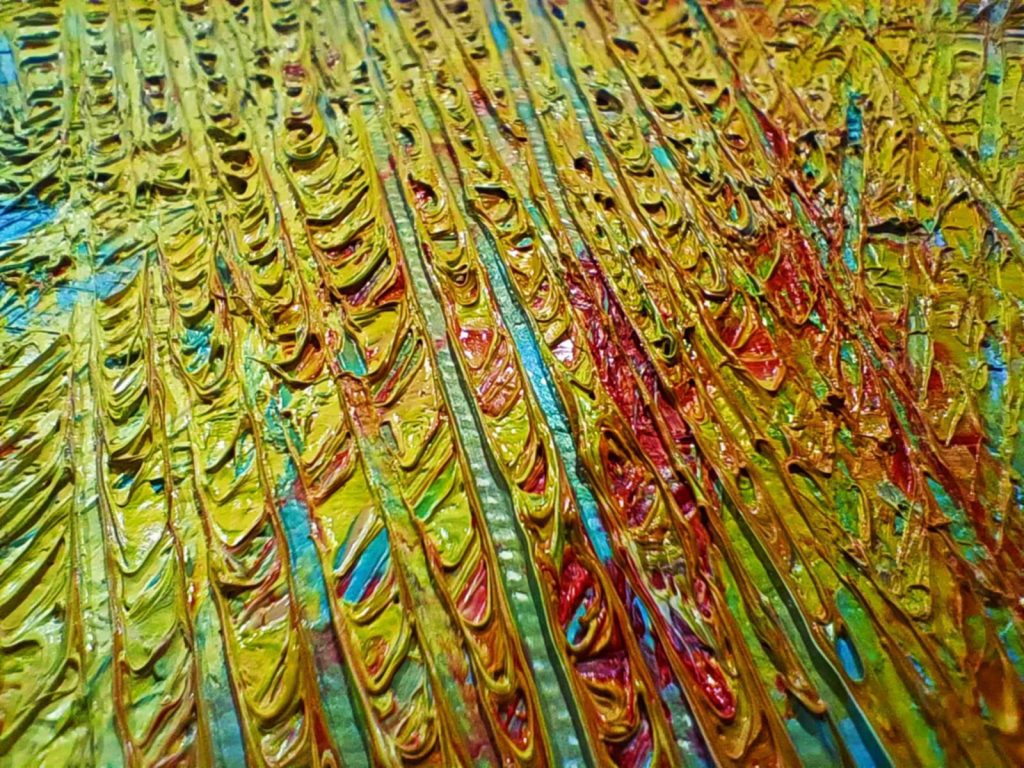The contemporary world of art is full of paradoxes. On the one hand, we talk about creative freedom, and on the other – art is often subject to rigid norms, interpretations and analyses that try to give it meaning in line with current intellectual trends. In this arrangement, both the creator and the recipient become victims of their own limitations. Krzysztof Konopka’s Orapism is not subject to intellectual judgment, it cannot be enclosed in the framework of definitions, and above all, it does not arise as a result of the conscious action of the creator’s ego. Orapism exposes the illusory nature of creativity dominated by the ego and intellectual manipulation.
True creative experience
Orapism is a process that does not arise in the mind, is not the result of conceptualization or an intentional act of creation. The Orapist artist is not the author of his work in the traditional sense, but a flow of energy, a tool of consciousness.
Art is more than technique, narrative or social manifesto. Art is an experience. An experience that requires complete immersion in the present moment, rejection of ego and intellectual limitations. An art critic who tries to “interpret” Orapism makes a mistake from the outset – because Orapism cannot be interpreted, it can only be experienced.
The Lost Art of Artists – the Illusion of Creativity
If an artist considers himself a revolutionary, an avant-gardist, a seeker of new forms, but in reality is a prisoner of his own habits and expectations, subordinating himself to the narratives of the art market, then even if his work is technically impressive, it is still a continuation of earlier ideas, reproduction in modern guise.
Orapism requires a completely different attitude from the artist. It rejects ego, rejects calculation, does not allow the creator to be guided by the expectations of the outside world. At the moment of the creative act, the artist disappears – only the process remains.
It is this inability to abandon the ego that causes most artists to be lost. They are afraid to create from a true space of consciousness, because it requires full presence and the risk of losing control over the work. Orapism is uncomfortable because it does not give a sense of mastery over art – it requires surrendering to the creative act. For those artists who build their “self” on being a creator, such a prospect is terrifying.
Those who have not experienced creativity
People who try to describe something they have never experienced have a difficult task. You cannot understand Orapism if you have not experienced it. It is like trying to describe the taste of a fruit you have never tasted.
Usually such people build their interpretations on the basis of theory, historical contexts and intellectual references. However, Orapism has no context – it happens in the present. You cannot understand it through comparisons, because it does not fit into any category. Trying to analyze Orapism is trying to intellectually grasp something that eludes concepts.
This makes most people who describe it feel lost when they encounter an authentic creative experience. They cannot describe it, so they ignore it or reduce it to the patterns they know. Orapism is a challenge to their system of values – because if true art happens beyond the intellect, beyond the ego, then the entire system of evaluating and interpreting art loses its foundation.
Orapism as creation
Art can be trapped in illusions – illusions of meaning, value, interpretation, aesthetics. Krzysztof Konopka’s Orapism changes the structure of the art world, showing that creativity is neither a concept nor a technique – it is a state of being. It cannot be categorized, described or explained. It can only be experienced.
Perhaps this is why Orapism is so uncomfortable – it forces you to abandon everything that is familiar.
Stop thinking and start experiencing!
